This Filipino pancit bihon recipe is a classic favorite using rice noodles stir fried with delicious pork, vegetables, and hard-boiled eggs in a savory broth! The perfect use of those leftover vegetables and is a potluck popular dish!
In our household, we love our Filipino pancit bihon recipe which is a family recipe using fresh vegetables with both Chinese sausage and pork!
This dish is super flavorful as the noodles and vegetables cook in a rich chicken broth seasoned with both oyster sauce and chili sesame oil for an incredible flavor.
Once you learn this recipe, this Filipino pancit recipe will be your go-to dish for celebrations and large gatherings to impress your guests! It’s that good!
This post will go over everything you need to know to create this Filipino pancit bihon recipe.
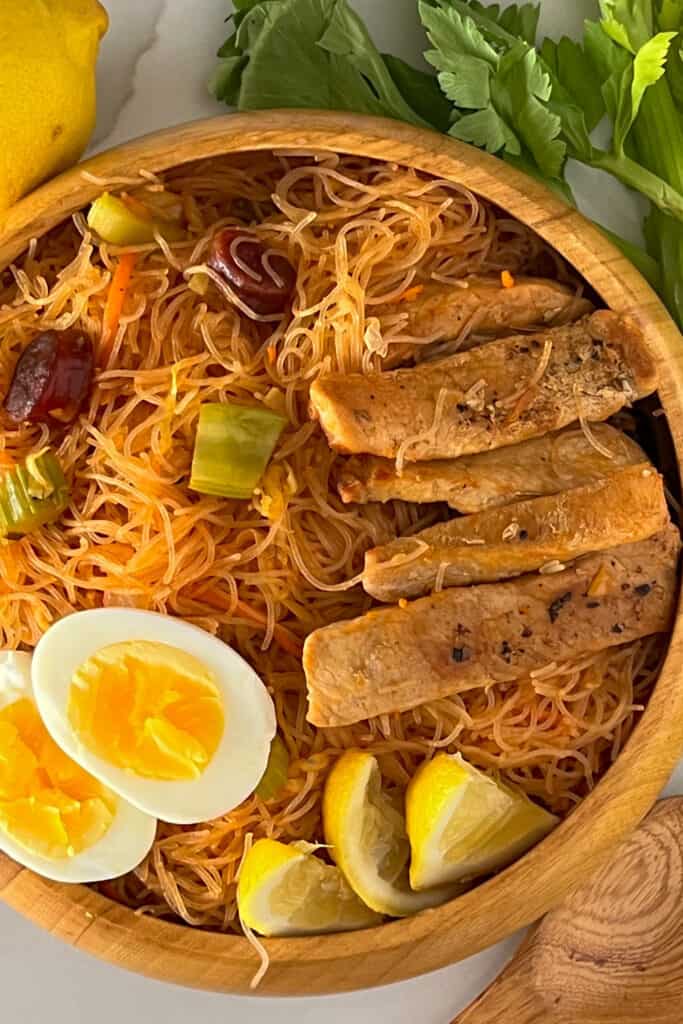
Recipe difficulty: Moderate level, but don’t get discouraged!
For this pork pancit bihon recipe, fresh vegetables, Chinese sausage, and sliced pork will be used to mix with the rice noodles. Yum! However, there are two main challenges with this dish! Both cooking the pork AND preparing the rice noodles can be difficult as both require more attention than the other ingredients in this pancit recipe. Keep reading the tips below to be prepared.

Sam’s Pro Tips for this Filipino Pancit Bihon Recipe
Do Not Overcook Your Pork!
Discussed more in my Habanero Herbed Spicy Pork Chops Recipe for an Easy Dinner, pork can overcook really easily!
Therefore, there are TWO concepts you need to focus on when cooking the pork.
First, the meat should be BROWNED on the outside and second, it needs to be TENDER on the inside. Cook the pork just until browned and then cover the pan to finish cooking the inside.
If you leave it on the pan for too long without covering, the pork can become dry and tough. Not good!
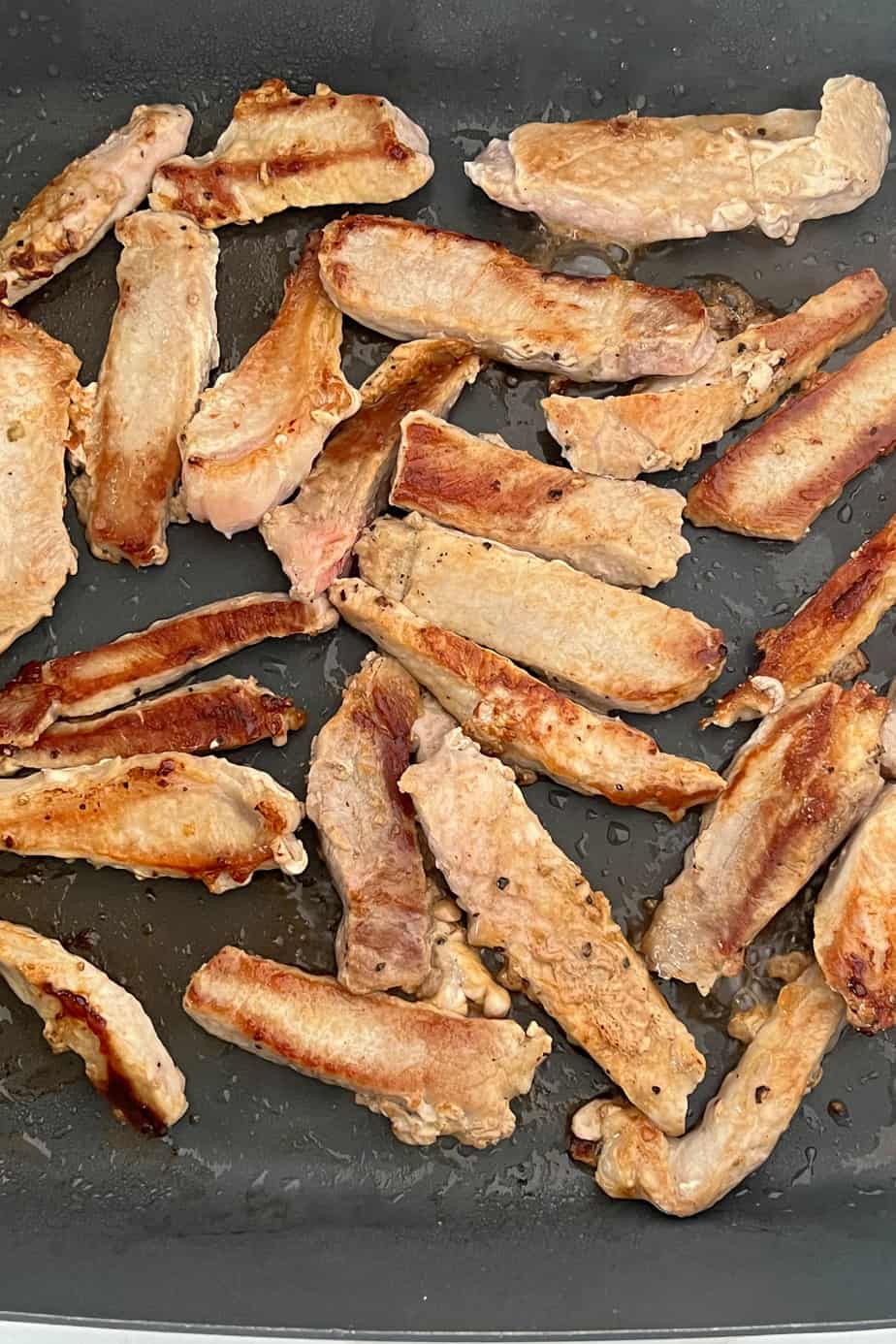

Soak the Rice Noodles First
Rice noodles, or sometimes seen as Bihon noodles on the packaging, cook way different than regular pasta noodles!
To prevent overcooking the noodles, soak the noodles in water for at least 10 minutes to get the noodles slightly separated.
Once it’s time to mix the noodles in this pork and vegetable pancit bihon recipe, the noodles will stir-fry over LOW heat in the pan until the liquid is gone. Do not use high heat as these noodles will overcook and start to clump! Seriously the worst!
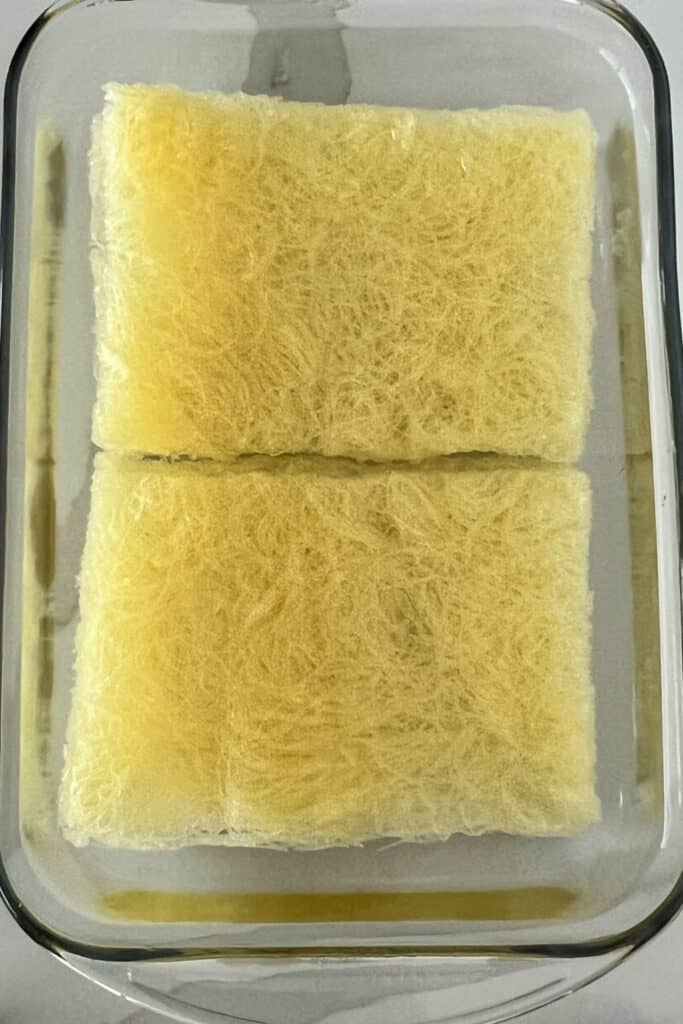
Using Achuete Annatto Powder
While using annatto powder is optional, be careful when using!
The powder will give a mild, nutty flavor to the dish and will color the noodles. Depending how much is used, the noodles can turn a dark red color!
There are different kinds of annatto powder so start with a couple teaspoons first until the desired color is achieved.
Bigger the Pan the Better
Similar to my Lemon Chicken Pasta with Spinach with an Olive Oil Dressing, use the biggest pan you can!
Mixing all the ingredients can become tiresome and messy if your pan is too small. A larger pan makes this way easier and cooks the ingredients evenly in this pancit bihon guisado!
Time Saving Tips for this Filipino Pancit Bihon Recipe
There are a lot of vegetables and ingredients that go into this Filipino pancit bihon recipe, so you can buy some of these vegetables already prepared to save you time!
For example, get that bag of shredded carrots and cabbage to just toss into the pan! You can also buy the garlic cloves already peeled to save you an extra step before you start mincing. Simple and quick!

Key Ingredients – Filipino Pancit Bihon Recipe
Below are some key and optional ingredients for this recipe:
Noodles and Meat
- Rice noodles: Rice noodles, or Bihon noodles, cook relatively fast! Soak the noodles first in water so that it separates easily when stir frying.
- Pork: A pound of pork is used and will be sliced into juicy strips to top the noodles. Watch it carefully!
- Chinese sausage: A pack of Chinese sausage will be sliced and adds a nice, salty flavor to the noodles. The vegetables will further cook in the oil of the sausage for added flavor before simmering in the broth.
Vegetables
- Garlic and onion: Popular in Filipino cuisine and is considered the basics! Side tip, always have these two ingredients in your refrigerator to pair with your meat or seafood.
- Shredded carrots: Using shredded carrots adds a beautiful color to this Filipino pancit recipe and nutritious vegetables.
- Shredded cabbage: One of the last vegetables to be added before simmering in the broth and will add texture to the dish.
- Celery: 3 stalks of celery is used to cook in the broth and add to all that greenery! Can you see the amount of vegetables yet?
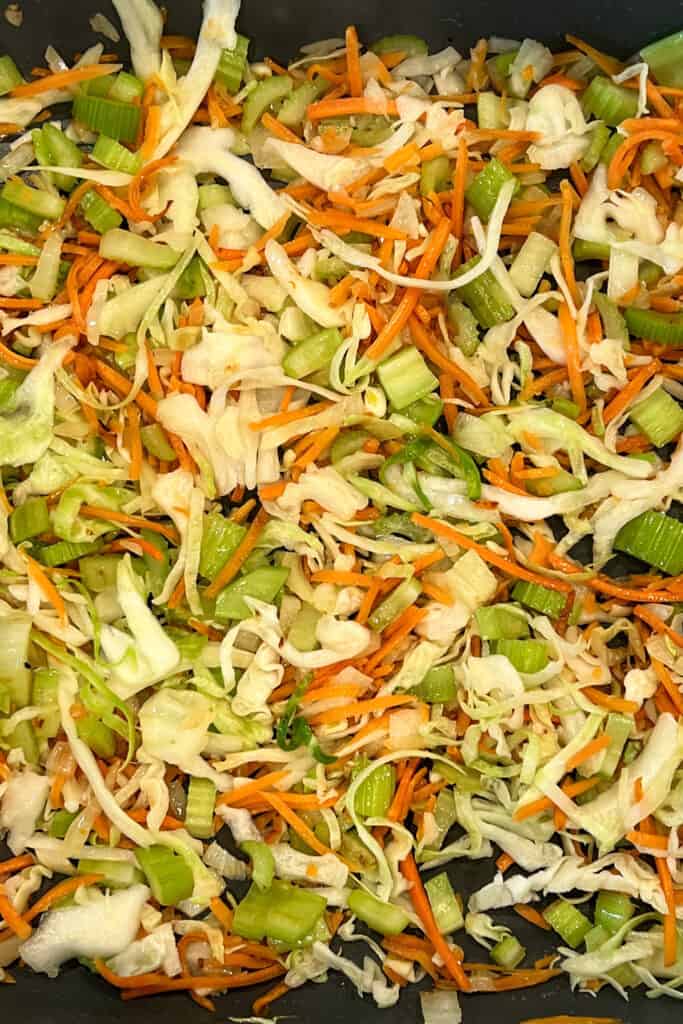
Sauce
- Oyster sauce: In this pancit bihon recipe with oyster sauce, the sauce and noodles get a rich, sweet flavor. Oyster sauce is common in Filipino cuisine like our Filipino Style Spam Garlic Fried Rice Anyone Will Love and is always an ingredient on-hand!
- Chicken broth: Using chicken broth will help flavor the noodles and sauce compared to water and is the main component when simmering.
- Soy sauce: Soy sauce is extremely popular in Filipino cooking! For our favorite brands, download our Top 5 Crazy-Cheap Ingredients You Need for Filipino Cooking and Where to Find It from my free resource library!
- Chili sesame oil: One of my favorite condiments of all time! I use 1 tablespoon for a kick to the sauce. Don’t worry, the spice will balance out with the sweetness of the oyster sauce.
- Lemon: Lemon juice really adds a level of freshness to this dish! Have lemon wedges on the side for guests that may want extra on their pancit.
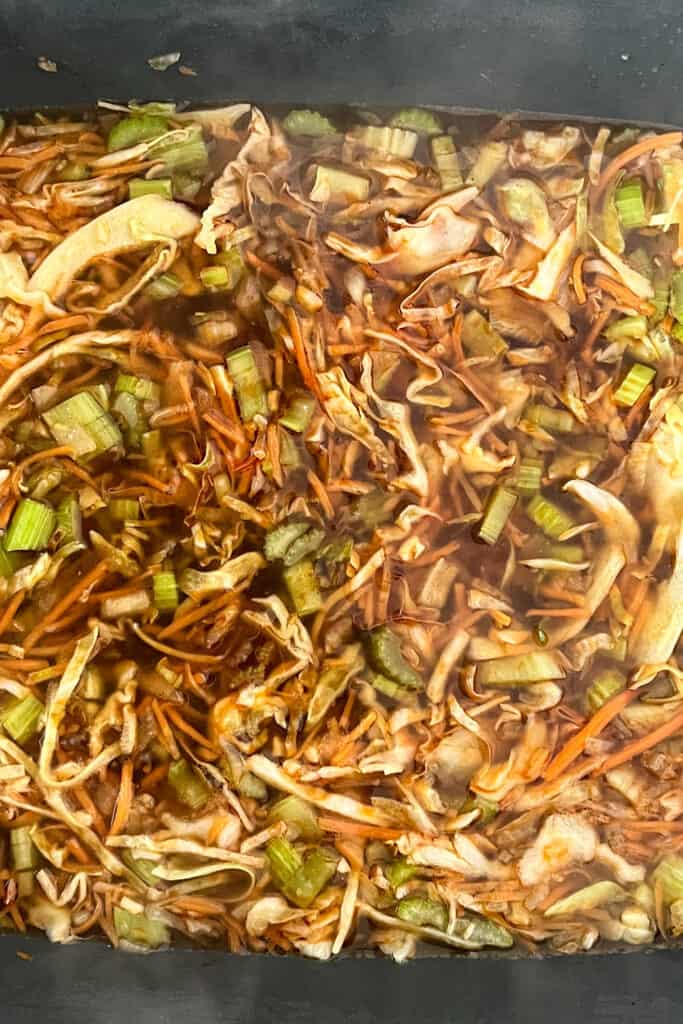
Optional
- Annatto powder: Start with a couple teaspoons to achieve the color of the noodles desired. Using the annatto powder will give a mild, nutty flavor to the noodles.
- Hard-boiled eggs: Boil some eggs to top these noodles for the best pancit bihon recipe ever! For tips on perfectly cooking hard-boiled eggs each time, check out our Party Favorite Sriracha Deviled Eggs with Shredded Parmesan for some helpful tips!
- Snow peas: Snow peas in pancit is actually extremely common. This is another vegetable that can be incorporated into this dish. I don’t like snow peas, so I didn’t use this in my pancit!
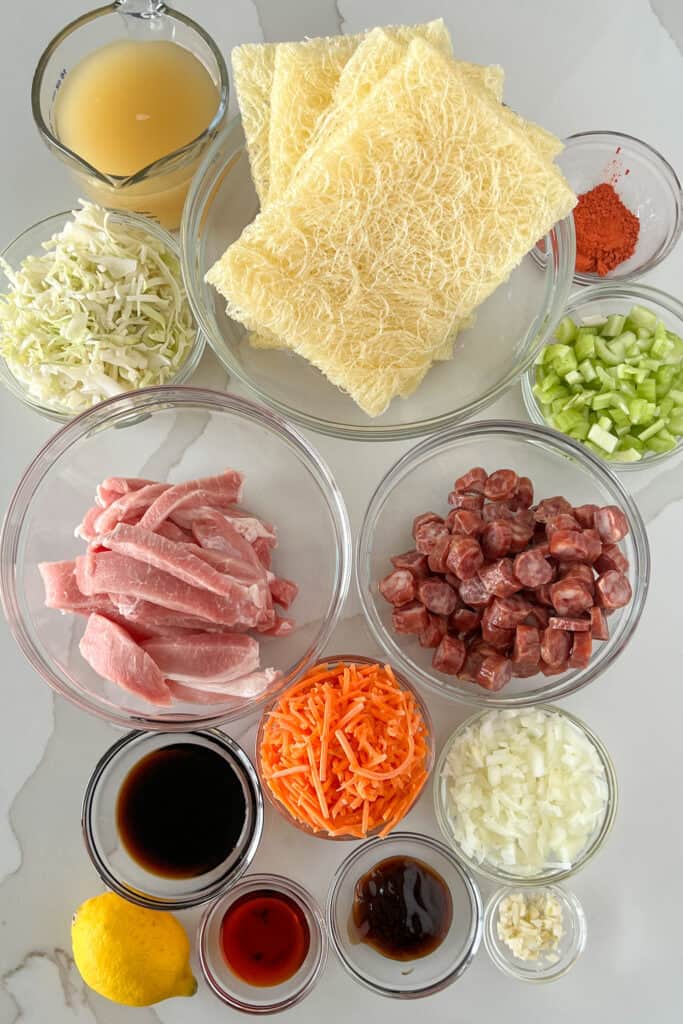
More Variations to this Filipino Pancit Bihon Recipe
There are a few ways you can variate this Filipino pancit bihon recipe. Here’s how:
- Add shrimp: If you don’t want to use pork, shrimp is also a great option to pair with the Chinese sausage. Just be sure to adjust the cooking time as shrimp can cook pretty fast!
- What can I pair with this dish? This pork pancit bihon recipe is a popular main dish typically served during large gatherings and celebrations. To make this a complete meal on your dinner table, add our Creamy Filipino Leche Flan for Your Next Party or Filipino Style Spam Garlic Fried Rice Anyone Will Love for some favorite options!
Interested in Filipino cuisine, but don’t know where to begin? Download our Top 5 Crazy-Cheap Ingredients You Need for Filipino Cooking and Where to Find It from my free resource library!
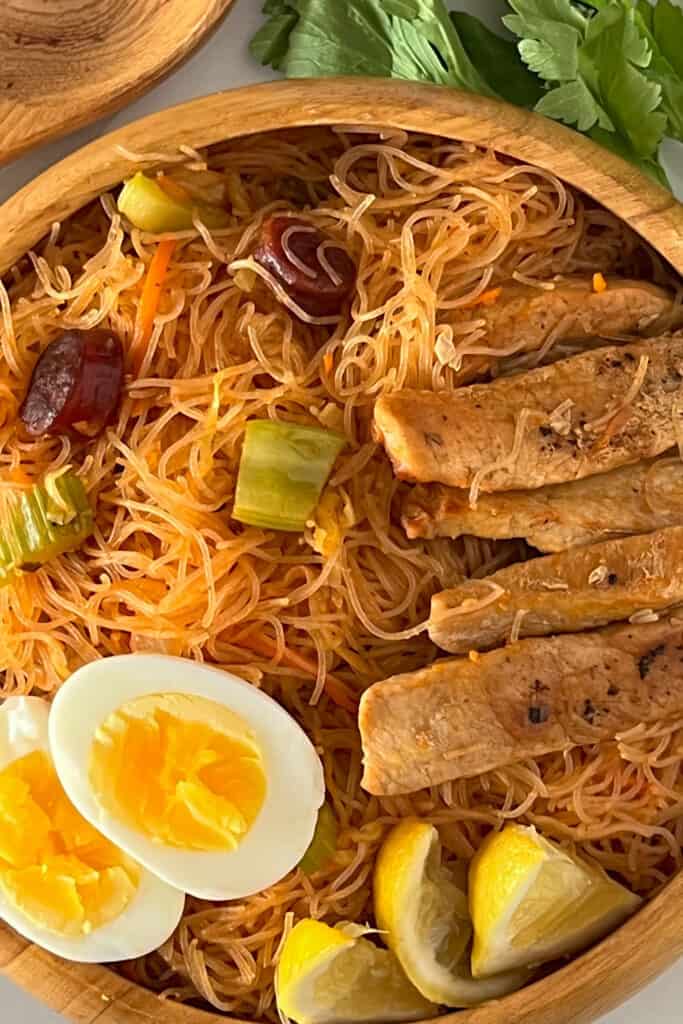
- Spicy Filipino Sardines Recipe with Habaneros | Ginisang Sardinas
- 5-Step Best Beef Salpicao Recipe
- 11-Minute Spicy Asian Cucumber Salad Recipe
- The Ultimate Filipino Spaghetti Sauce Recipe
Frequently Asked Questions
Can I put oyster sauce in bihon?
Yes! Incorporating oyster sauce in this Filipino pancit bihon recipe will add a savory, sweet flavor to the sauce and noodles.
What is the difference between Pancit Bihon and pancit canton?
The difference between pancit bihon and pancit canton is the type of noodles used. Pancit bihon uses rice noodles, or bihon noodles, while pancit canton used flour noodles.
What goes well with pancit?
Pancit is a great main dish and will work well with different sides such as cucumber salad, pork barbecue sticks, or even a dessert like flan.
This post was all about how to create this Filipino pancit bihon recipe.
SAVE OUR Filipino pancit bihon recipe TO YOUR FAVORITE PINTEREST BOARD!
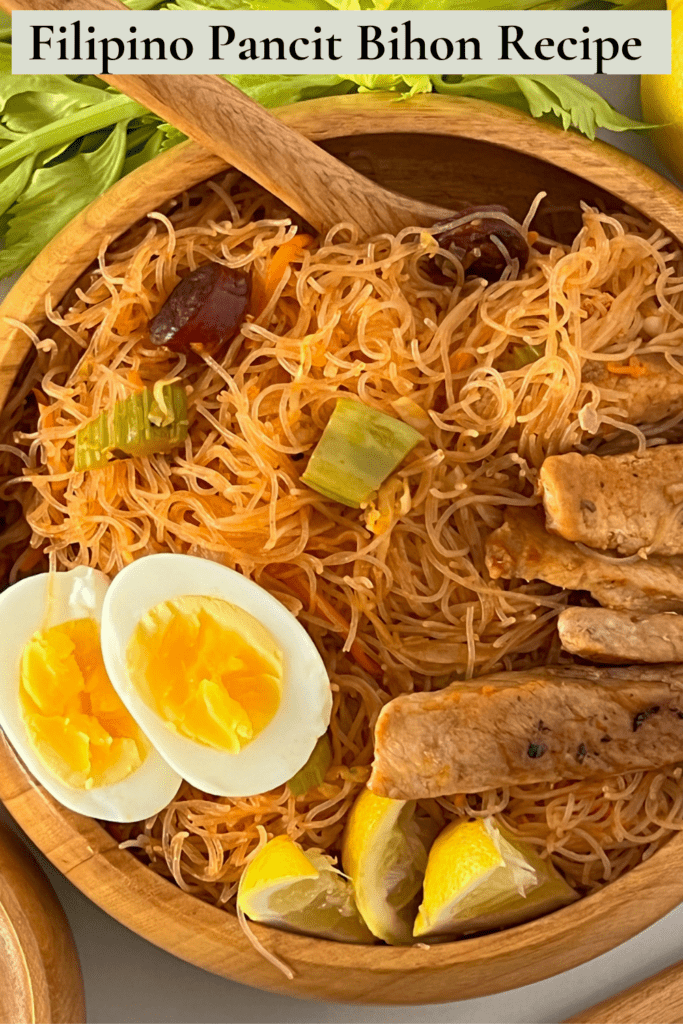

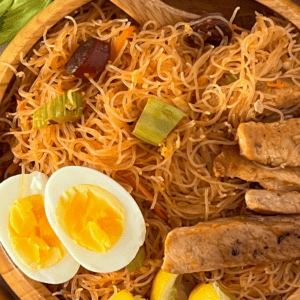
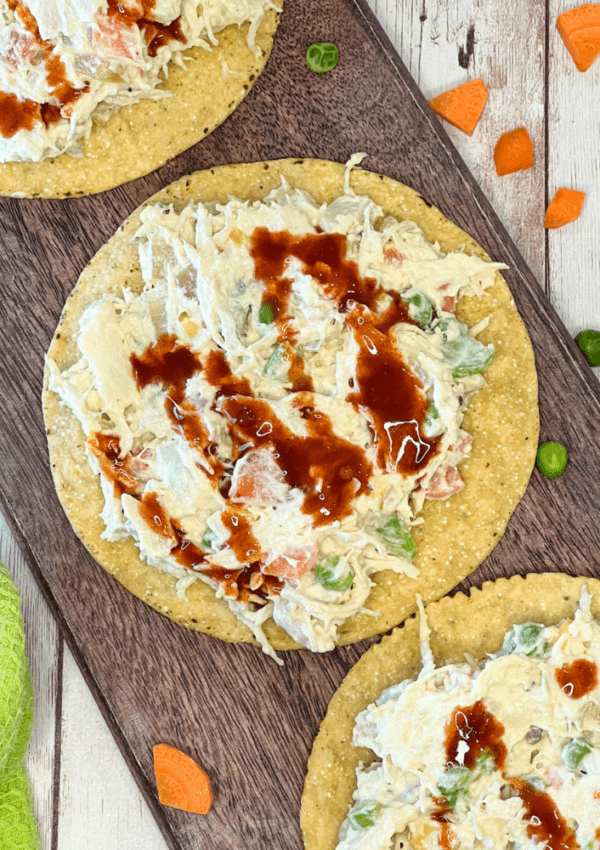
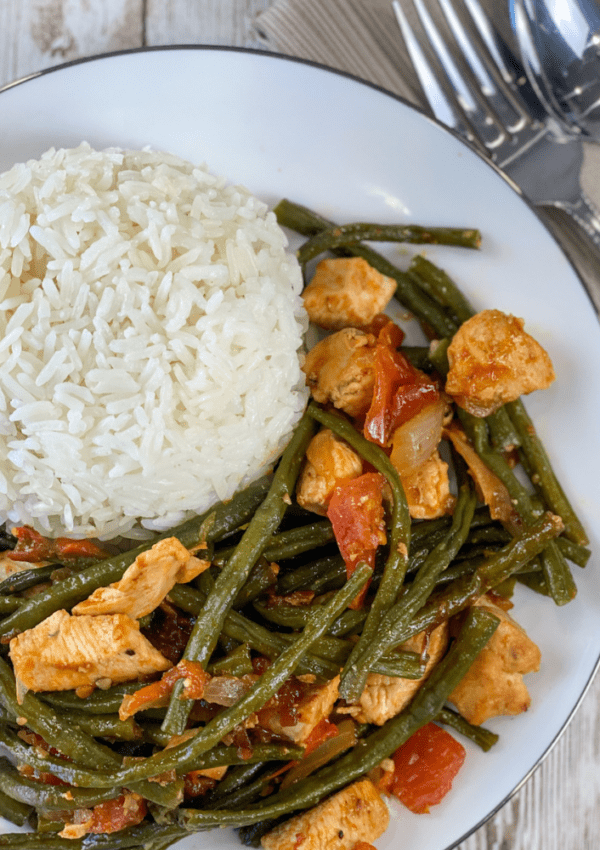
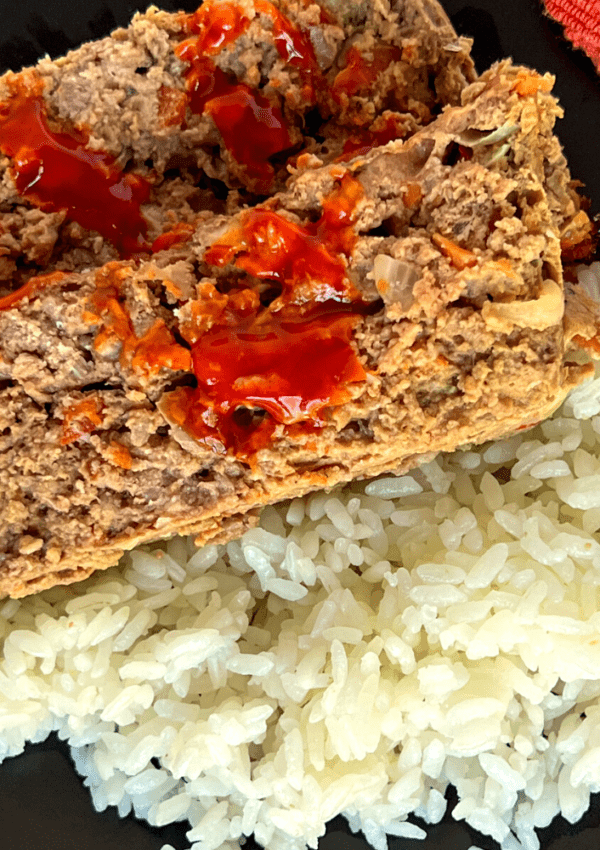
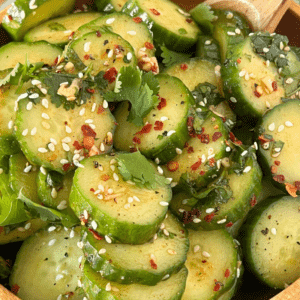


Leave a Reply